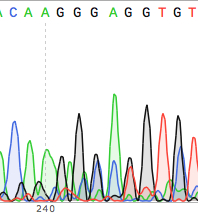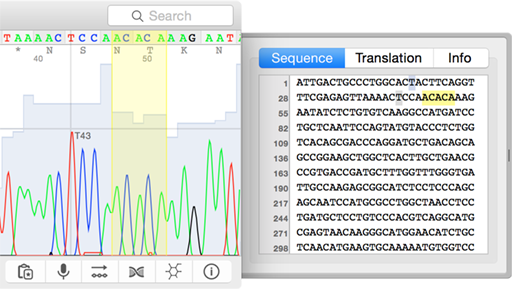

Dna sequencing 4peaks Pc#
The availability of a reliable, non-invasive diagnostic test for canine UC and PC remains a paramount need. Currently, clinical diagnosis of canine UC and PC requires comprehensive diagnostic workups, including blood test, urinalysis and diagnostic imaging, in addition to cytological examinations of tumor cells by skilled clinical pathologists. Fine needle aspiration of tumor tissue carries the risk of disseminating tumor cells along the needle tract and should be performed with caution. For example, benign epithelial cells can appear morphologically neoplastic, with variation in cell size and increased basophilia after prolonged contact with urine or under urothelial hyperplasia secondary to inflammatory condition. Cytological analysis of epithelial cells, however, may be misleading.

The presence of abnormal epithelial cells in urine sediment, traumatic catheterization, prostatic wash and/or fine needle aspiration have all been used to support the diagnosis of canine UC and PC. Less invasive diagnostic aides for canine genitourinary cancers are available, though these are considered unreliable. Prompt diagnosis of genitourinary cancers therefore presents a clinical challenge to veterinarians, potentially impeding the timeline of appropriate therapy. In addition, the size and sex of affected dogs may limit the viability of such diagnostics in individual patients, while the necessary skills and equipment may not be available in all veterinary clinics. Currently, reliable tests to distinguish UC and PC from differential diagnoses are limited to histopathologic evaluation, requiring an invasive and costly biopsy. Clinical symptoms of these genitourinary cancers, including hematuria, stranguria and incontinence, are indistinguishable from other non-neoplastic and more common conditions such as cystitis and prostatitis. The aggressiveness of these tumors is thought, at least in part, to result from delayed diagnosis and therapeutic intervention.

Urothelial carcinoma (UC) of the lower urinary tract and prostatic carcinoma (PC) in dogs are characterized by local invasion and high rates of regional and distant metastases. We have shown that ddPCR is a sensitive molecular technique with the potential to facilitate accurate and non-invasive means of canine UC and PC diagnosis. Furthermore, the ddPCR assay identified the mutation in free catch urine samples from 83% of canine UC and PC patients, demonstrating its utility as a non-invasive means of diagnosis. ddPCR had superior sensitivity for detection of the V595E mutation: 75% of UC, 85% of PC, and 0% of control samples were mutation positive, respectively, and the V595E mutation was detected at a level as low as just 1 in 10,000 alleles (~0.01%). In all cases the sensitivity to detect the mutant allele was compared with conventional Sanger sequencing. In addition the assay was assessed for use with DNA isolated from free catch urine samples derived from canine patients with UC (n = 23), PC (n = 3), as well as from dogs with cystitis and healthy controls (n = 37). The assay was evaluated in DNA samples prepared from biopsy specimens of UC (n = 48) and PC (n = 27), as well and non-neoplastic bladder epithelium (n = 38). In this study, we developed a droplet digital PCR (ddPCR) assay for detection of the canine BRAF V595E mutation in canine urogenital tumors. Recently, the canine BRAF V595E mutation was detected in ~80% of canine UCs and PCs. Access to a non-invasive means to confirm diagnosis is currently an unmet need.

Such specimens require specialized medical equipment and are invasive procedures, limiting the availability of diagnosis by histopathology for many canine patients. Current diagnosis of canine UC and PC requires histopathological examination of a biopsy. Urothelial carcinoma (UC) of the lower urinary tract and prostatic carcinoma (PC) are aggressive genitourinary cancers in dogs, characterized by invasion to surrounding tissues and high metastatic potential.


 0 kommentar(er)
0 kommentar(er)
